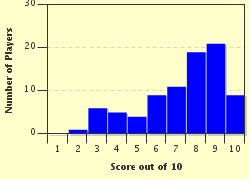Quiz Answer Key and Fun Facts
1. We begin with a 19th-century American artist, who was numbered among the Impressionist group, and who was a protege of the French painter Edgar Degas. She especially liked to paint women in evening dress, at public places such as the opera. What is the name of this American art pioneer?
2. Going back a few centuries, we consider an Italian artist who was born in Rome, and settled in Florence in 1621. Famous in her own time and still famous today, she is perhaps best known for her renditions, bloody and yet heroic, of the Biblical story of Judith and her maidservant beheading the Assyrian general Holofernes. Who is this Italian genius?
3. This talented artist painted a well-known portrait of her patron, Marie-Antoinette. She painted the French queen in a very simple white muslin-type dress and a big straw hat, as Marie-Antoinette and her aristocratic friends loved to pretend they were milkmaids who loved the peasant lifestyle. Who is this French woman?
4. This Frenchwoman was married to a successful artist named Robert Delaunay. In the early part of the marriage, she did not wish to compete directly with her husband. She became a painter in her own right during the second part of the twentieth century. What is this woman's name?
5. There was a Canadian artist who achieved considerable fame in her lifetime, in the late 19th and the first half of the 20th century. She is known for paintings of the native peoples' culture and rituals, and for some very beautiful post-Impressionist works of the great forests of her native British Columbia. What is her name?
6. Angelica Kaufmann (1741-1807) was a Swiss artist who came to international prominence through her work in England; she was a protégé of Sir Joshua Reynolds, and like him, she was most famous for portraiture She became a pioneering artist in the transferring of her pictures to which medium?
7. Going back to the first half of the seventeenth century, there was a painter called Judith Leyster, a very fine artist who was only the second woman admitted to guild membership, important in law at the time. Her work is often compared to that of Frans Hals. Which country did Judith Leyster call home?
8. "The Dinner Party", by the American artist Judy Chicago, receives a lot of attention in FunTrivia quizzes. What is the form this modern work of art takes?
9. There was another well-known woman Impressionist artist working in the latter half of the nineteenth century. She was a Frenchwoman who started out as a copyist and was a student of Corot. Her name is often mentioned in the same breath as Mary Cassatt. Who is this artist?
10. There was a twentieth-century American artist who became very famous for painting, among other subjects, huge single flowers such as irises and lilies. It is generally accepted that these paintings were also veiled references to female genitalia. What's the name of this woman?
Source: Author
elmo7
This quiz was reviewed by FunTrivia editor
agony before going online.
Any errors found in FunTrivia content are routinely corrected through our feedback system.

